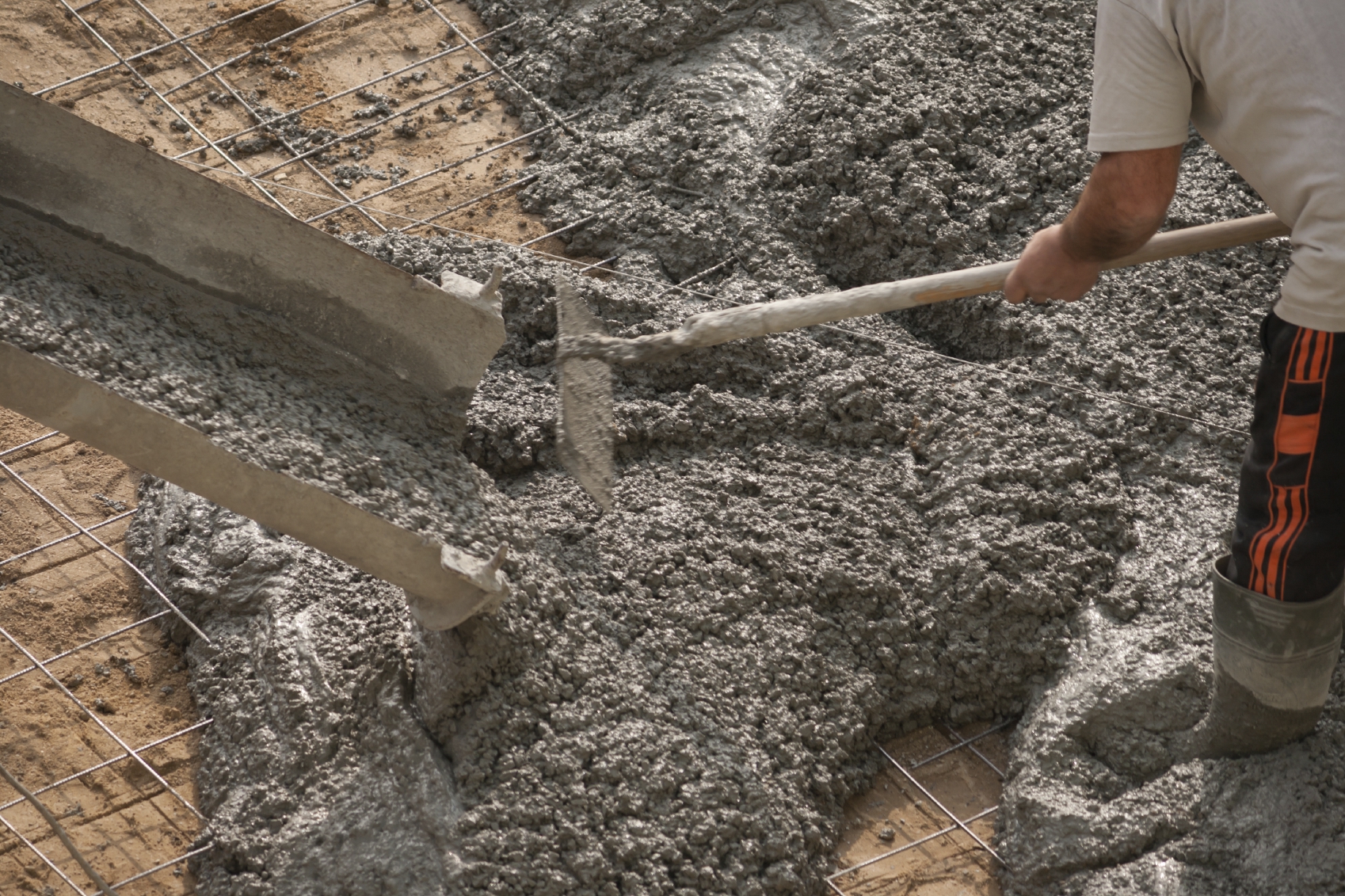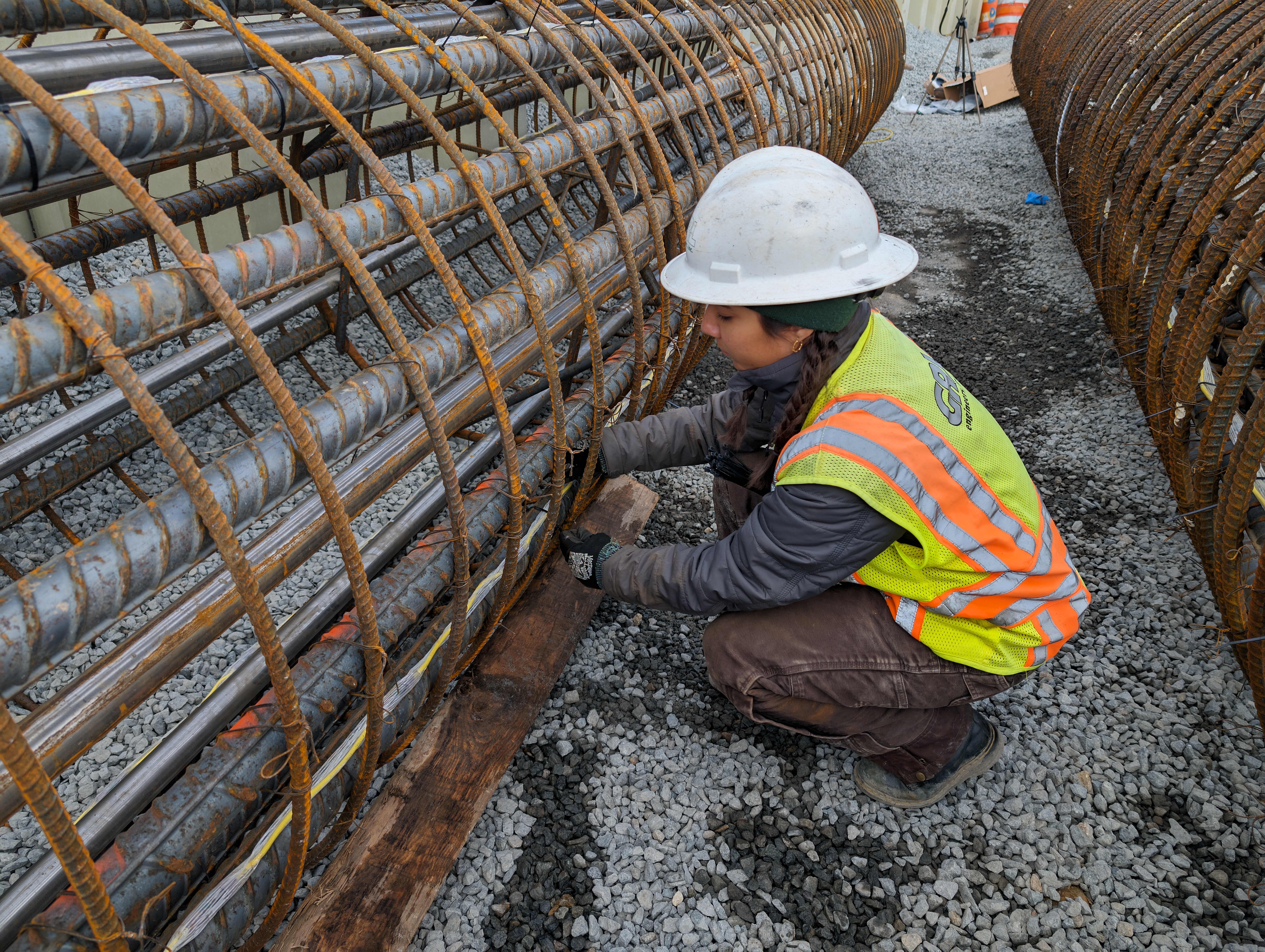Effective Tips to Maximize Project Value with West Coast General Engineering Concrete
Effective Tips to Maximize Project Value with West Coast General Engineering Concrete
Blog Article
The Necessary Duty of Concrete Foundation in Structural Integrity and Long Life
When it pertains to constructing a building, the foundation is much more essential than you might assume. Concrete structures give unparalleled toughness and sturdiness, ensuring your framework can hold up against different environmental challenges. Without a strong base, you run the risk of possible concerns like moving or breaking, which can compromise security and worth. Comprehending the nuances of concrete structures can be the trick to maintaining your financial investment for many years ahead. So, what should you take into consideration following?
Understanding the Value of Concrete Foundations
Concrete structures are essential to the overall stability of any framework, as they offer the vital support required to hold up against various lots and environmental problems. When you believe regarding constructing a home or a commercial room, the structure is the first point you need to think about. It serves as an obstacle versus wetness, securing your property from water damages. A well-placed concrete foundation also stops settling and changing, which can lead to cracks in walls and floorings. You'll intend to assure that the foundation is properly made and strengthened, as this influences the durability of your structure. Additionally, a strong structure can enhance energy effectiveness by reducing air leakages. Keep in mind, overlooking the significance of a concrete structure can result in costly repairs down the line. Investing in a top quality structure upfront is crucial for the stability and toughness of your structure.
Advantages of Concrete Structures for Structural Honesty
While numerous variables add to a structure's structural stability, concrete structures use unmatched resilience and toughness. You'll value that concrete can hold up against severe weather conditions, withstanding both wetness and temperature level changes. This strength indicates your structure is much less most likely to experience splitting or moving with time, which can jeopardize its safety.Additionally, concrete's inherent weight provides a solid base, protecting against movement throughout natural events like quakes or floods. When you pick a concrete foundation, you're also going with low upkeep; unlike timber, it won't rot or bring in pests, saving you money and time in repairs.Moreover, concrete's fire resistance offers included safety, ensuring your framework can sustain heats without significant damages. On the whole, spending in a concrete foundation implies you're focusing on the long-term security and stability of your building, making it a smart selection for any kind of construction project.
Common Types of Concrete Foundations
When it concerns constructing structures, recognizing the typical types of concrete structures can assist you make educated choices for your project. One of the most prevalent types consist of slab-on-grade, crawl space, and full basement foundations.A slab-on-grade foundation is a straightforward, economical option, where a thick concrete piece is put straight on the ground. This type works well in cozy environments, as it minimizes warmth loss.Crawl area foundations boost the home slightly over ground, enabling ventilation and access to plumbing and electrical systems. This design can aid stop moisture issues.Full basement structures offer additional living or storage area while supplying excellent architectural support. They call for even more excavation and are normally used in cooler environments to stop frost heave.
Elements to Think About When Creating a Concrete Foundation

Best Practices for Installing Concrete Foundations
When you're mounting a concrete foundation, proper site preparation is necessary to ensure security (West Coast GE Concrete contractors). You'll likewise need to understand reinforcement strategies to improve toughness and longevity. Lastly, do not overlook the healing process, as it plays an essential role in attaining a strong foundation
Website Preparation Significance
Although it may seem uncomplicated, proper site preparation is important for ensuring a solid and resilient concrete structure. Begin by removing the area of any particles, vegetation, or organic material that can endanger the structure's honesty. Next, assess the soil kind and compaction; you may need to excavate or add products to produce a secure base. Level the ground to ensure even weight distribution and avoid clearing up concerns later on. Installing correct drain systems is also important to prevent water build-up, which can deteriorate the foundation in time. Mark out the structure's dimensions properly to lead the pouring procedure. By adhering to these steps, you'll establish the stage for a successful concrete foundation that stands the test of time.
Reinforcement Methods Described
As soon as the site is correctly prepared, the following action in assuring a sturdy concrete foundation involves executing effective reinforcement techniques. You should start by utilizing steel rebar, which gives tensile strength and helps avoid cracking. Lay the rebar in a grid pattern, making certain it's raised using spacers to maintain correct protection. Additionally, think about using cable mesh for additional assistance, especially in areas subject to hefty loads. Don't forget to tie the rebar junctions securely with wire. For larger structures, fiber support can improve toughness, lowering the risk of shrinkage cracks. Always comply with regional building ordinance and guidelines to guarantee compliance. By applying these support strategies, you'll greatly improve your structure's stamina and long life, laying a solid foundation for your structure.
Treating Process Basics
To guarantee your concrete foundation treatments appropriately, it is essential to keep adequate dampness and temperature level conditions right away after putting. Begin by covering the surface with a damp cloth or plastic sheeting to keep wetness. This keeps the concrete moisturized, protecting against fractures and guaranteeing stamina. You should also keep track of the temperature; excellent healing conditions are between 50 ° F and 90 ° F. If it's also warm, mist the surface area routinely to prevent rapid evaporation. For cool weather, take into consideration this post making use of shielding coverings to preserve warmth. Go for a treating period of at the very least 7 days, as this is important for ideal strength development. By adhering to these finest practices, you'll boost your foundation's longevity and longevity, guaranteeing structural honesty for several years ahead.
Maintenance of Concrete Foundations for Longevity
To keep your concrete foundation solid and long-term, regular assessments are vital. You must also assure reliable drain remedies are in area to protect against water damages. If you spot any splits, resolving them without delay will conserve you from bigger problems down the line.

Normal Examinations and Analyses
While routine evaluations and evaluations could appear like a job, they're important for maintaining the stability of your concrete structure. By routinely examining for fractures, shifts, or indications of wear, you can catch potential concerns prior to they rise into expensive repair services. Try to find any kind of water merging around the structure or uncommon settling, as these can signify underlying troubles. It's also smart to check any kind of modifications in your house's structure, like doors that stick or windows that don't open efficiently. Maintaining a document of your evaluations assists track adjustments over time, permitting proactive maintenance. Inevitably, these assessments ensure your structure remains steady, sustaining the durability and safety and security of your whole structure. Do not ignore this vital element of homeownership!
Efficient Water Drainage Solutions
Normal inspections can reveal problems like drain issues that could jeopardize your concrete structure's stability. To avoid water buildup, assure your gutters and downspouts straight water far from the foundation. Installing French drains can properly redirect surface and groundwater, minimizing stress on your structure wall surfaces. Furthermore, rating the dirt around your home assists guarantee that water flows away, instead of pooling near your foundation.Consider using sump pumps in locations prone to flooding, as they actively eliminate excess water. Regularly check for blockages in drain systems and clear them immediately. You'll safeguard your foundation's stability and durability by taking these proactive steps. Remember, efficient water drainage options are vital for preserving a solid, durable concrete structure.
Motivate Split Repair Works
When you discover splits in your concrete foundation, addressing them without delay is essential for maintaining its durability. Small cracks can quickly evolve into bigger concerns, endangering the architectural honesty of your home. Regularly evaluate your foundation for indications of damage, such as horizontal or vertical splits. If you detect any type of, don't wait-- repair them immediately. You can utilize epoxy shots or concrete patching compounds, which work for securing fractures. Constantly follow the maker's guidelines and think about consulting a professional for substantial damage. Bear in mind, timely repairs not only improve your structure's toughness however likewise save you cash in the long run by protecting against extra considerable repair work down the line. Remain positive, and your foundation will certainly continue to be solid and safe.
Resolving Usual Problems With Concrete Structures
Concrete foundations can deal with different problems in time, making it critical to identify and address them quickly. Among one of the most usual issues is fracturing, which can happen due to temperature changes look at this web-site or settling dirt. If you see cracks, it's important to evaluate their dimension and deepness; tiny cracks can usually be sealed, while bigger ones might call for specialist evaluation.Water breach is one more significant concern. Excess dampness can lead to mold and mildew growth and architectural damage. Warranty appropriate drainage around your structure to reduce this risk. In addition, seek signs of shifting or bowing walls, as this can suggest underlying concerns with your structure's stability.Regular examinations are fundamental to catch these troubles early. If you spot any type of concerning signs, don't be reluctant to seek advice from a structure specialist. By staying positive, you can keep the stability and durability of your concrete foundation, guaranteeing your home continues to be safe and safe.
Regularly Asked Questions
How Does Soil Type Influence Concrete Foundation Efficiency?
Dirt type greatly influences concrete foundation efficiency. If you've got large clay, as an example, it can cause moving and cracking. Sandy soil may result in settling. Comprehending your dirt aids ensure a steady structure.
Can Concrete Foundations Be Repaired if Damaged?
Yes, you can fix broken concrete structures. admixture Depending upon the degree of the damage, methods like epoxy injection or slab jacking can restore stability. It's finest to seek advice from an expert for reliable services.
What Is the Regular Life Expectancy of a Concrete Foundation?
A concrete structure normally lasts 30 to 100 years, depending on elements like soil conditions, climate, and maintenance. You'll intend to maintain an eye on it to guarantee it continues to be healthy throughout its life-span.
Exist Option Materials to Concrete for Foundations?
Yes, there are options to concrete for foundations, like steel, wood, or even recycled materials. Each alternative has distinct benefits and downsides, so you ought to consider your task's specific demands when picking the right material.
Exactly How Does Climate Impact Concrete Foundation Longevity?
Environment significantly impacts concrete structure resilience (West Coast General Engineering industrial concrete Rancho Cucamonga). Severe temperatures, dampness, and freeze-thaw cycles can deteriorate the material, causing splits and architectural concerns. You must think about regional environment conditions when planning your foundation to ensure lasting performance
Report this page